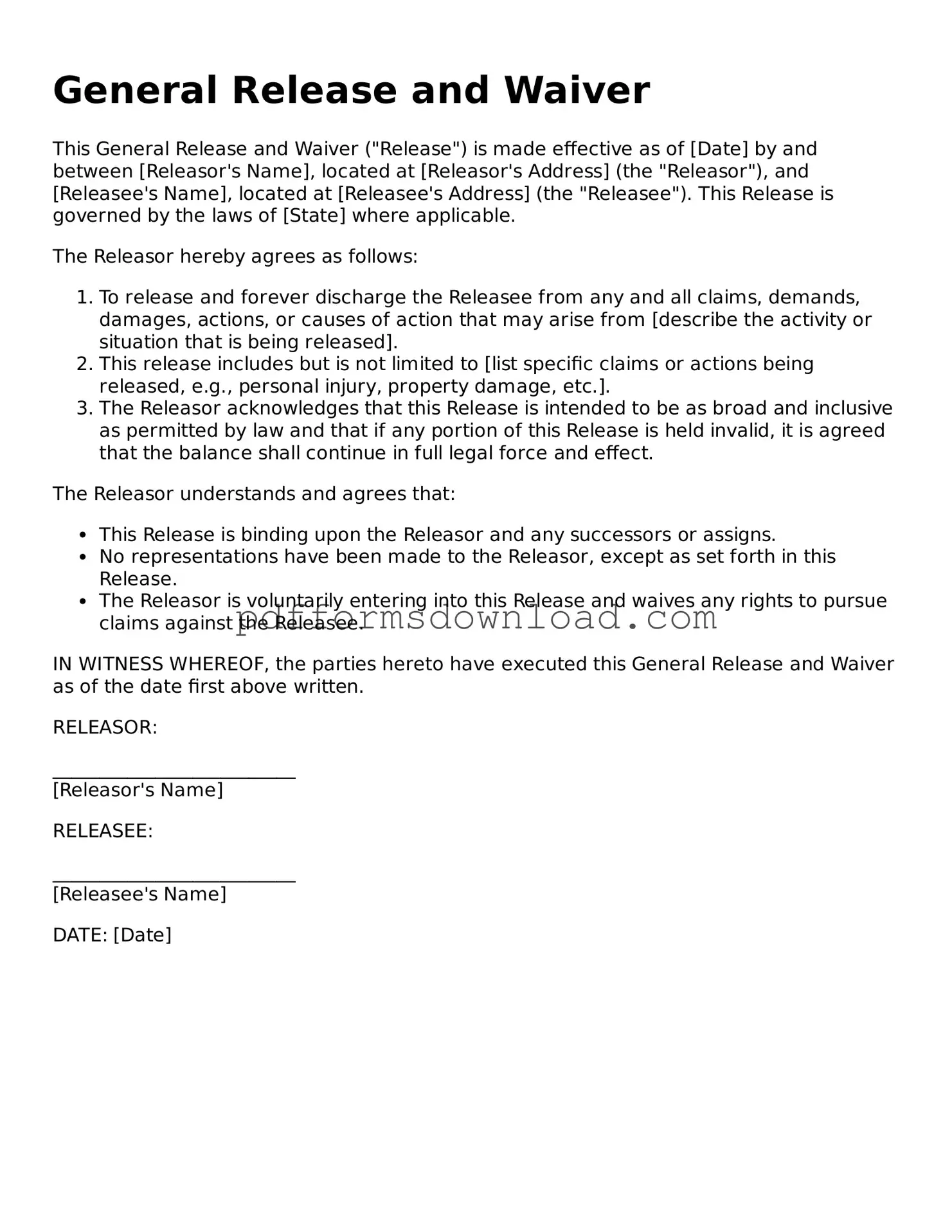Official General Release and Waiver Document
The General Release and Waiver form is a legal document that allows individuals to relinquish their right to pursue any future claims against another party, typically in exchange for compensation or participation in an activity. This form serves as a protective measure, ensuring that all parties involved understand the risks and agree to release each other from liability. To safeguard your interests, consider filling out the form by clicking the button below.
Make This Document Now
